When it comes to cannabis almost everyone has heard of cannabinoids, the two most known are THC and CBD. It is fairly common knowledge that tetrahydrocannabinol (THC), and cannabidiol (CBD) are naturally occurring chemical compounds in the cannabis plant that can create different effects when consumed. THC is the cannabinoid responsible for the mental or euphoric feelings one might experience after smoking, eating or otherwise consuming cannabis. CBD on the other hand is not psychoactive, so it will not cause a mental effect, however, it does have different physical effects on the body.
CBD is often used to help manage different medical conditions due to its beneficial uses in managing inflammation pain relief, insomnia, and other such conditions. CBD can be extracted from both hemp and cannabis plants, whereas THC only is found in the cannabis plant and is the main psychoactive compound in marijuana. THC is also used both medically and recreationally, it has beneficial qualities for a range of medical conditions.
According to federal law, the 2018 Farm Bill, CBD extracted from less than 0.3% THC hemp is legal at the federal level. THC remains illegal at the federal level, however, is legal in several states under state law. A growing number of states have medical marijuana programs, as well as are passing laws that decriminalize or legalize recreational cannabis under state law.
 The effects of THC-O are similar to other forms of THC; however, they are far more psychoactive. Lower doses may feel the same or like normal THC, moderate to higher doses are much more stimulating, and can create a more intense sense of euphoria or altered mindset. High doses of THC may reach a level of an individual feeling quite intoxicated. The effects of THCO can last longer than naturally occurring THC.
THC-O will take longer to take effect. This goes for both ingesting and smoking or vaping THCO. It can take up to 20 minutes to feel effects from THC when smoking or vaping, and even longer when ingesting, sometimes up to an hour. Once effects start, they will be felt quite quickly. The effects of THC may come in waves, which can cause some people to think that it is not working. It is best to wait and see how THC-O will affect you before taking any more. Remember, THC-O is much stronger than regular THC and you will not need nearly as much to feel the effects. Effects of THC-O are far more intense and can last longer than THC so it is always best to start small until you know how your body and mental state will be when interacting with THC-O. THCO is what is known as a prodrug, meaning it will not become active until it has been metabolized through the liver.
The effects of THC-O are similar to other forms of THC; however, they are far more psychoactive. Lower doses may feel the same or like normal THC, moderate to higher doses are much more stimulating, and can create a more intense sense of euphoria or altered mindset. High doses of THC may reach a level of an individual feeling quite intoxicated. The effects of THCO can last longer than naturally occurring THC.
THC-O will take longer to take effect. This goes for both ingesting and smoking or vaping THCO. It can take up to 20 minutes to feel effects from THC when smoking or vaping, and even longer when ingesting, sometimes up to an hour. Once effects start, they will be felt quite quickly. The effects of THC may come in waves, which can cause some people to think that it is not working. It is best to wait and see how THC-O will affect you before taking any more. Remember, THC-O is much stronger than regular THC and you will not need nearly as much to feel the effects. Effects of THC-O are far more intense and can last longer than THC so it is always best to start small until you know how your body and mental state will be when interacting with THC-O. THCO is what is known as a prodrug, meaning it will not become active until it has been metabolized through the liver.

Meet a “New” Cannabinoid: THC-O
There is a relatively new cannabinoid making rounds in the industry; a chemical compound that is known as THC-O, sometimes referred to as a super cannabinoid. THC-O is a synthetic compound derived from hemp; its full name is THC-O acetate. Technically THC-O is not a new compound, it was studied by the United States military from the late 1940s through the late 1970s. It has not been on the radar of the DEA for long, and only recently became something commercially available for cannabis consumers.Where Does THC-O Come From?
Put very simply, THC-O is what can be called a chemical twin of THC. THC-O shares the same base structure as THC. However, THC-O is not a naturally occurring cannabinoid. It must be synthetically manufactured in a lab. THC-O starts with naturally occurring CBD that has been extracted from less than 0.3% THC hemp. The CBD is extracted from raw hemp. From there something called delta-8 THC is extracted from the CBD. Delta-8 THC is a psychoactive chemical compound that is present in both hemp and cannabis. D8 THC is not as strong as THC; however, it can have some of the same psychoactive effects, on a much lesser scale. Delta-8 THC is more similar in structure to THC than it is to CBD. It also binds to the body’s endocannabinoid system, and unlike CBD can have some mildly intoxicating effects. Once the delta-8 THC is extracted from CBD it is added to acetic anhydride which is an organic solvent. It is highly flammable. This process removes all the terpenes and flavonoids left, creating a very thick THC isolate that has no flavor or scent and is quite strong. THC-O is a thick substance that looks like motor oil. This process can only be done in a professional lab setting and should not be tried at home. The extraction process requires experience, specialized training, and extremely specific equipment. Right now, THC-O can only be synthesized in a lab setting. It is said to be about three times stronger than regular THC.Is THC-O Legal?
Because THC-O is derived from hemp it is technically legal on the federal level. Because of this, and the similar effects it has to cannabis, THC-O is becoming quite popular in areas where cannabis has not been legalized on a state level. THC O products like tinctures, oils, and vape cartridges are available to purchase online. THCO is not listed as a prohibited substance in much of the world with a few exceptions. There is still a lot to learn about THC-O. There is not enough data to really know the full effects of THC-O, or how it might affect someone long term. Because of its high potency, THC-O is appealing to those looking for that increased high. THC oh may also be appropriate for people suffering from conditions like long-term pain that may require high doses of THC and CBD. Due to its high potency, THC-O does not require ingestion of as much as a naturally occurring THC product might.Is THC Syrup Similar to THC-O and How Do They Differ?
While “what is thc syrup” often conjures images of a viscous, cannabinoid-infused liquid, it’s important to understand its distinction from THC-O, a synthetic analogue of THC. THC syrup typically combines cannabis extracts with syrupy sweeteners, offering a palatable consumption method. Conversely, THC-O boasts greater potency and longer-lasting effects, but with a less straightforward production process, differentiating it from its syrupy cousin in both experience and chemical composition.
What are the Effects of THCO?
 The effects of THC-O are similar to other forms of THC; however, they are far more psychoactive. Lower doses may feel the same or like normal THC, moderate to higher doses are much more stimulating, and can create a more intense sense of euphoria or altered mindset. High doses of THC may reach a level of an individual feeling quite intoxicated. The effects of THCO can last longer than naturally occurring THC.
THC-O will take longer to take effect. This goes for both ingesting and smoking or vaping THCO. It can take up to 20 minutes to feel effects from THC when smoking or vaping, and even longer when ingesting, sometimes up to an hour. Once effects start, they will be felt quite quickly. The effects of THC may come in waves, which can cause some people to think that it is not working. It is best to wait and see how THC-O will affect you before taking any more. Remember, THC-O is much stronger than regular THC and you will not need nearly as much to feel the effects. Effects of THC-O are far more intense and can last longer than THC so it is always best to start small until you know how your body and mental state will be when interacting with THC-O. THCO is what is known as a prodrug, meaning it will not become active until it has been metabolized through the liver.
The effects of THC-O are similar to other forms of THC; however, they are far more psychoactive. Lower doses may feel the same or like normal THC, moderate to higher doses are much more stimulating, and can create a more intense sense of euphoria or altered mindset. High doses of THC may reach a level of an individual feeling quite intoxicated. The effects of THCO can last longer than naturally occurring THC.
THC-O will take longer to take effect. This goes for both ingesting and smoking or vaping THCO. It can take up to 20 minutes to feel effects from THC when smoking or vaping, and even longer when ingesting, sometimes up to an hour. Once effects start, they will be felt quite quickly. The effects of THC may come in waves, which can cause some people to think that it is not working. It is best to wait and see how THC-O will affect you before taking any more. Remember, THC-O is much stronger than regular THC and you will not need nearly as much to feel the effects. Effects of THC-O are far more intense and can last longer than THC so it is always best to start small until you know how your body and mental state will be when interacting with THC-O. THCO is what is known as a prodrug, meaning it will not become active until it has been metabolized through the liver.

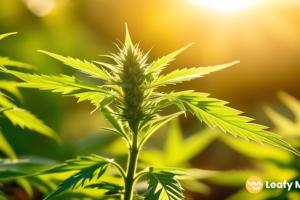
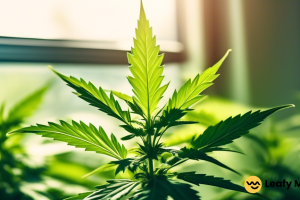





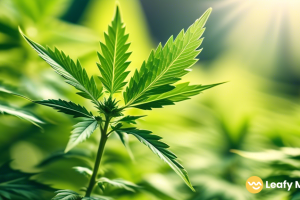
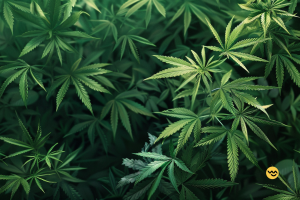
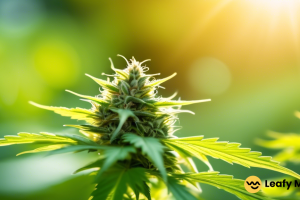
Leave a Reply